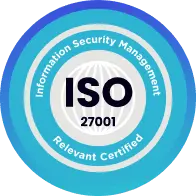Guide
Creating a calendar for social networks is an effective way to plan and organize your content strategy, ensure consistency, and engage with your audience regularly. Here’s a detailed guide to help you create a calendar for social networks:
1. Define Your Social Media Objectives:
– Clarify your goals and objectives for using social media (e.g., brand awareness, lead generation, customer engagement).
– Determine the key metrics you will use to measure the success of your social media efforts.
2. Identify Your Target Audience:
– Understand your target audience demographics, interests, and preferences.
– Conduct market research or use analytics tools to gain insights into your audience’s behavior on social media.
3. Choose Your Social Media Platforms:
– Identify the social media platforms where your target audience is most active.
– Consider factors such as platform features, content format suitability, and your available resources.
4. Establish Content Themes and Categories:
– Define the key content themes or categories that align with your brand and resonate with your audience.
– Examples of themes could include educational content, behind-the-scenes glimpses, user-generated content, and promotions.
5. Determine Posting Frequency:
– Determine the ideal posting frequency for each social media platform.
– Consider your audience’s expectations, platform algorithms, and the resources you have available to create and manage content.
6. Create a Content Mix:
– Plan a diverse mix of content types, including images, videos, infographics, blog posts, and user-generated content.
– Consider incorporating a combination of promotional, educational, entertaining, and inspirational content.
7. Outline a Content Calendar Template:
– Choose a calendar tool or spreadsheet to create your content calendar.
– Create a template with columns for the date, content type, caption, hashtags, links, and any other relevant details.
8. Plan Content in Advance:
– Plan your content in advance, ideally on a monthly or quarterly basis.
– Fill in your content calendar with specific topics, themes, or ideas for each day or week.
9. Include Key Dates and Events:
– Identify relevant holidays, industry events, product launches, or company milestones to incorporate into your calendar.
– Plan special campaigns or promotions around these dates to boost engagement.
10. Collaborate with Your Team:
– Involve your team members, including content creators, designers, and social media managers, in the planning process.
– Assign responsibilities and deadlines for content creation, review, and scheduling.
11. Schedule and Automate Posts:
– Use social media management tools (e.g., Hootsuite, Buffer) to schedule and automate your posts.
– Ensure that your content is scheduled at optimal times for each platform, taking into account your audience’s online behavior.
12. Monitor and Analyze Performance:
– Regularly track and analyze the performance of your social media posts.
– Monitor engagement metrics, reach, click-through rates, and conversions.
– Use these insights to refine your content strategy and make data-driven decisions.
13. Stay Flexible and Responsive:
– While it’s essential to have a content calendar, be flexible to adapt to real-time events, trends, or changes in your industry.
– Monitor conversations and engage with your audience in a timely manner.
14. Continuously Improve:
– Learn from your social media analytics and feedback from your audience.
– Experiment with different content formats, posting times, and strategies.
– Adjust your content calendar based on what works best for your audience and social media goals.
Remember, a social media calendar is a planning tool, but it’s important to stay agile and responsive to maintain a dynamic and engaging social media presence. Regularly review and update your calendar to ensure it remains aligned with your business objectives and audience preferences.



